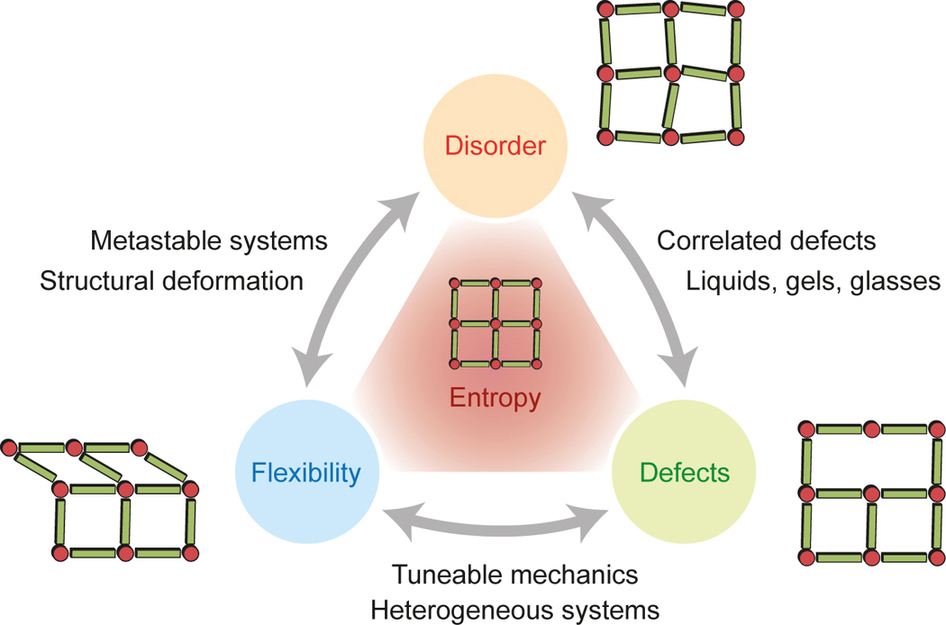Since the development of the MOF field in its current form more than two decades ago, priority has been placed on the synthesis of new structures. However, more recently, a clear trend has emerged in shifting the emphasis from material design to exploring the chemical and physical properties of those already known. In particular - while such nanoporous materials were traditionally seen as rigid crystalline structures - there is growing evidence that large-scale flexibility, the presence of defects and long-range disorder, are not the exception, but rather the norm. Here we offer some perspective into how these concepts are perhaps inescapably intertwined, highlight recent advances in our understanding, and discuss how a consideration of the interfaces between them may lead to enhancements of the materials' functionalities.
Figure: The phenomena (grey arrows) that emerge from their coupling of complex phenomena in MOFs. Entropy plays a central role in all of these systems.
T. D. Bennett, A. K. Cheetham, A. H. Fuchs and F. X. Coudert, "Interplay between Defects, Disorder and Flexibility in Metal–Organic Frameworks", Nature Chemistry (2016).

